Category Archives: Uncategorized
Fieldwork at Fullwood Hall 27/1/25
FULWOOD HISTORY GROUP: Fieldwork at Fullwood Hall 27th January 2025 Present: D.A., J.B., A.C., G.C., M.L., C.M., D.M., J.P., K.P.
- Thanks to Alan’s connection with Fullwood Hall[1], we were able to explore one of its fields; it is south facing, rising steeply to meet its northern boundary on Harrison Lane
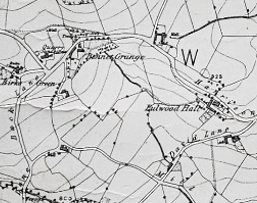
- Our focus was a local belief that there was once a ‘tunnel’ between Bennet Grange and Fullwood Hall:
- Chapter 20 of Fullwood Hall: The First 600 Years[2] provides a thorough exploration of the tunnel story
- Clarke & Wilson (1987)[3] discuss Sheffield’s ‘Subterreanea’ (pp.22 -32). They suggest that a perceived connection between two points, (such as Fullwood Hall and Bennett Grange), can develop into a belief around a physical connection such as a passage or tunnel in local lore; they add that drains, sewers, mines and culverts may also feed into local tunnel lore
- Frank Brindley, a Sheffield news photographer, wrote newspaper articles about Sheffield’s ‘Tunnel Mystery’ in the 1930s, including the ‘underground passage’ between Fullwood Hall and Bennett Grange
- Hall (1974, p.18)[4], also refers to ‘a secret passage’ between the two houses
- There is also a possible connection with priests’ escape tunnels dating from the Elizabethan era, of which there is reportedly evidence in the city centre; Hostombe and Crutch (2023, pp.16-17) discuss this in relation to Priest Hill across the valley
- We were also informed by a Lidar map and by a Friends of the Porter Valley publication (2004)[5]; the following features identified in their Catalogue were of particular interest:
- ‘Underground culvert’ in Bennett Grange grounds
- ‘Possible lynchet’: a ‘short, well-defined bank’
- Traces of possible hollow-way running E-W near the top of the field
- Lynchet: ‘well-defined’, running N-S down the field
- We began in the timber room, under which was a cellar identified as the place where the tunnel allegedly began; differences in flooring materials were noted
- On reaching the field, we were joined by four curious horses who followed us for the first part of our investigation
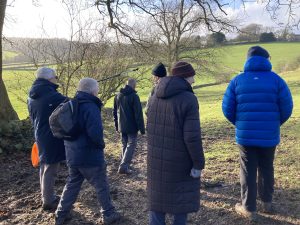
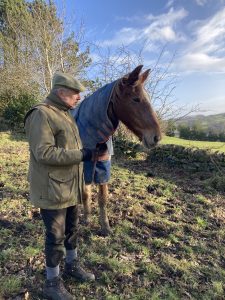
- Various features were noticed:
- those listed above by FoPV (2004)
- a paved pathway which is now almost obscured by earth and turf
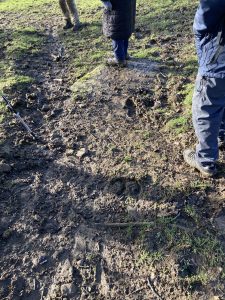

- boundaries: e.g. curved Bennett Grange east boundary drystone wall which may date from 18th century

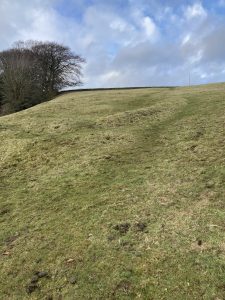
- waterways & intriguing humps & a rusted metal plate in the wall of Bennett Grange
- terracing which took the form of parallel tracks on the north side of the steep bank; these were later identified as most likely to be “terracettes” – a form of soil creep that gets trodden down by animals to create narrow ridges
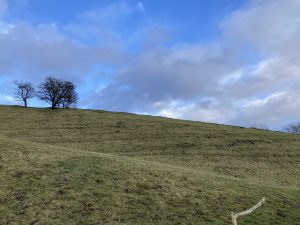
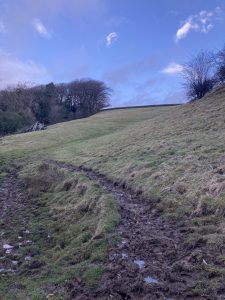
- a sheep-through or sheep creep: ‘purpose-built rectangular holes set in walls to allow access by sheep…typically capped by a long stone lintel.’ [6]

[1] Hostombe, S. & Crutch, A. (2023). Fullwood Hall – The First 600 Years. Northend.
[2] Ibid.
[3] Clarke, D. and Wilson, R. (1987). Strange Sheffield: Legends, Folklore and Mysteries of Hallamshire. Association for the Scientific Study of Anomalous Phenomena.
[4] Hall, M. (1974). More About Mayfield Valley and Old Fulwood. J. W. Northend Ltd.
[5] Friends of the Porter Valley (2004). Porter Valley Landscape History and Archaeology; Final Report. Ardron Unified Landscape Assessments.
[6] Ibid.
Gilcrest Wood
This area of local green space has had a number of names over the centuries: maps from the 1700s indicate it was known as Goulhirst or Gallhirst, (perhaps linking to Goole/Gold as in Goole Green). More recently, the area was named by local people as Bluebell Wood, The Meadow and simply The Field. Its official name, according to the local authority, is Crimicar Lane Open Space. In 2013, a local group formed to take care of this precious area and, in keeping with historical records, have adopted the name Gilcrest Wood and Meadow. For more information, here’s a link to their website: https://www.fogwam.org/
